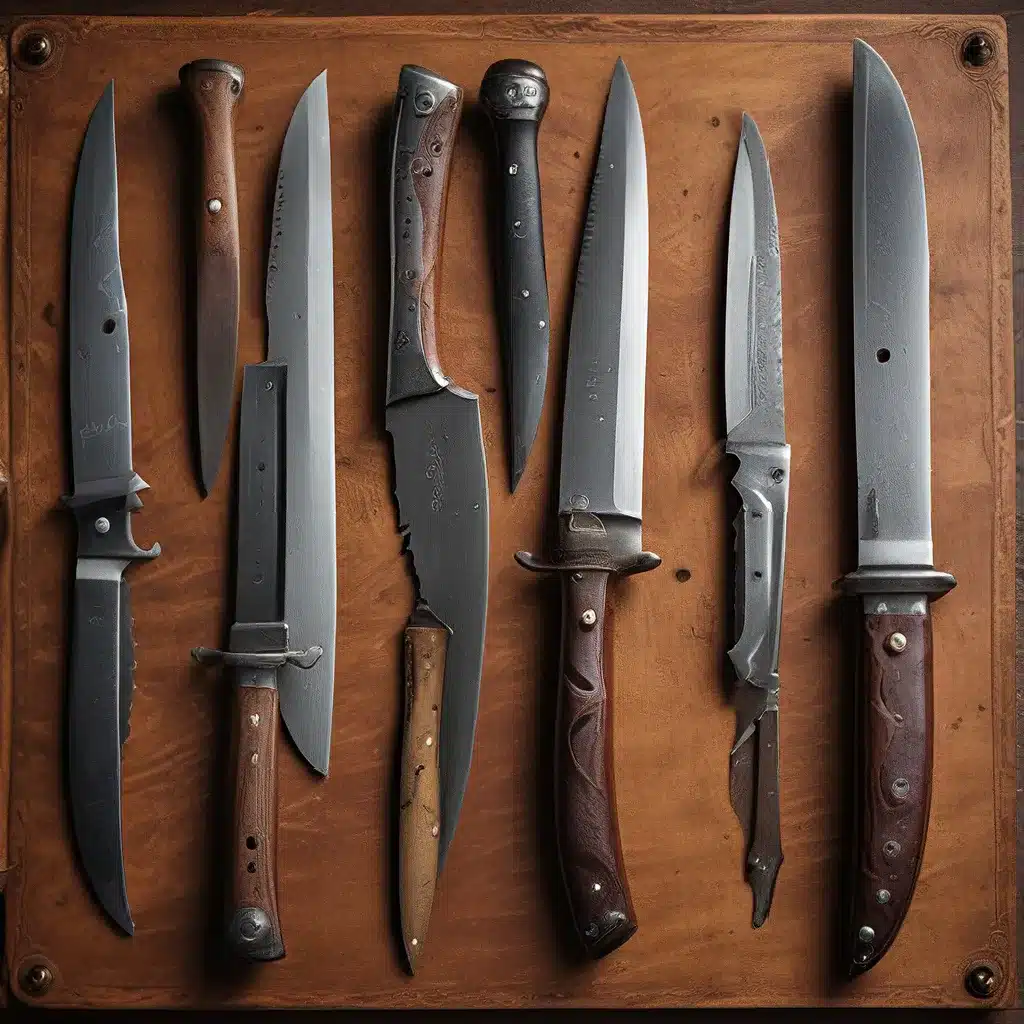
Ah, the humble knife – one of the oldest tools known to humanity. From the Paleolithic era to the modern day, the story of the knife is a tale of innovation, artistry, and the relentless drive of human evolution. As I embark on this captivating journey through the annals of knife history, I can’t help but feel a sense of wonder and reverence for these remarkable instruments that have shaped our very existence.
The Primitive Beginnings
Rewind the clock to the Paleolithic period, and we find our ancestors, the Neanderthals and Homo sapiens, crafting the earliest forms of knives. These primitive tools, fashioned from bone, obsidian, and other natural materials, served as crucial aids for survival – cutting, hunting, and even self-defense. I can almost hear the rhythmic tapping of stone against stone as our ancestors honed their knife-making skills, each iteration a step closer to the sophisticated blades we wield today.
As the Mesolithic and Neolithic eras dawned, the art of knife-making underwent a remarkable transformation. The introduction of flint knapping techniques and the dawning of metallurgy revolutionized the world of cutlery. Suddenly, knives became not just functional tools, but also objects of beauty and status. The Egyptians even added a tang to their knives, allowing for more secure attachment of the handle – a clever innovation that paved the way for future advancements.
The Rise of Metalworking
The Copper Age and Bronze Age saw the forging and casting of knives reach new heights. Blacksmiths emerged as highly skilled artisans, meeting the growing demand for weapons and tools. The Romans introduced the first friction-folding knives, a precursor to the modern-day multi-tool, while the Vikings showcased their ingenuity with the clasp model and its distinctive latch.
The Iron Age brought about the mastery of forge welding and tempering, techniques that imbued knives with unparalleled strength and resilience. Imagine the sparks flying as these skilled blacksmiths hammered and shaped the unyielding metal, creating blades that would become the stuff of legends.
The Artistic Renaissance
As we move into the Middle Ages and the Renaissance, the story of the knife takes an even more captivating turn. Knives were no longer just utilitarian; they became symbols of status, adorned with precious stones, enamel, and intricate carvings. Guilds of cutlers emerged, elevating the craft to new heights and fostering a sense of pride and exclusivity.
It was during this period that the fixed-blade knife began to share the spotlight with its folding counterpart, a transformation spurred by the evolution of fashion and the advent of pockets. Interestingly, even women and nuns carried small fixed-blade knives, a practice that was eventually frowned upon by the Church due to concerns over vanity.
The Industrial Revolution and Beyond
The Industrial Revolution ushered in a new era of mechanization and mass production, forever transforming the world of cutlery. Blast furnaces, hydraulic power, and the mastery of new steels and surface treatments allowed for unprecedented efficiency and cost-effectiveness. Knives became more specialized, catering to the needs of professions like medicine, agriculture, and even the military.
As the 20th century dawned, the introduction of stainless steel and the rise of synthetic materials like resin and ceramics further revolutionized the knife industry. No longer were knives just tools; they became symbols of heritage, craftsmanship, and personal expression. Today, the French knife industry boasts a rich tapestry of regional specialties and designer creations, each one a testament to the enduring legacy of this remarkable tool.
The Enduring Legacy of the Knife
As I reflect on this captivating journey through the ages, I’m struck by the resilience and adaptability of the humble knife. From its primitive beginnings to its modern-day incarnations, the knife has been a constant companion in the human story, evolving to meet our ever-changing needs and desires.
Whether it’s the robust fixed-blade for outdoor adventures, the versatile folding knife for everyday carry, or the exquisite Damascus steel blade for the discerning chef, there’s a knife for every occasion. And at the heart of it all lies the rich French heritage and craftsmanship that continues to shape the industry, as evidenced by the remarkable offerings from Herman Knives.
As I hold a Morta Damascus knife in my hand, I can’t help but feel a deep connection to the generations of artisans who have poured their passion and skill into these magnificent blades. The fossilized mammoth ivory handle is a tangible link to our shared past, a reminder that the story of the knife is inextricably woven into the fabric of human civilization.
So, fellow enthusiasts, let us continue to explore, discover, and appreciate the enduring legacy of the knife. For in doing so, we honor the ingenuity, the artistry, and the enduring spirit of our ancestors, whose blades have carved their way through the annals of time.


